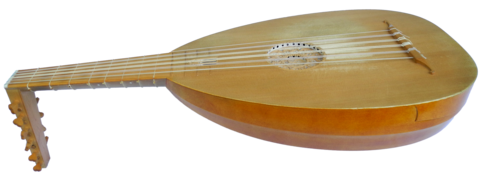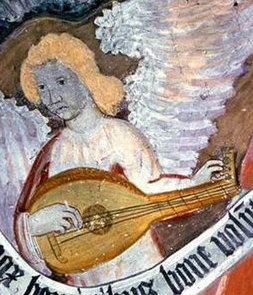Lute

The lute can be traced back to the 13th century in Christian Europe. It originally came from Arabic regions (ar. al- oud, “the wood”) and gradually spread to Central Europe via the Arabic dominated regions of Spain, southern France and southern Italy. In the German-speaking world, it is found from the 14th century at the earliest. Characteristic features are the pear-shaped body with a rounded “bowl” composed of individual segments (“ribs”) and the angled pegbox. Initially an instrument that was played both fretless and fretted, the lute received frets as standard in Europe from about 1400 onwards, and in the 15th century it was to become one of the most popular instruments in the German-speaking world. In the 14th century the lute still had four courses, but by the 15th century five double courses became the norm with an added sixth course towards the end of the century. Until around 1500 the lute was played with a plectrum. From the middle of the 15th century, however, a technique of playing with the fingers was added, which eventually survived. Soloistic polyphonic playing can be assumed from the 15th century onwards with both plectrum and finger technique. The earliest unambiguous lute source is the Wolfenbüttel lute tablature.

